Two-Faced Great Roman God Janus – Symbol Of All Beginnings And Endings
A. Sutherland - AncientPages.com - Two-faced deities were worshipped in many different cultures.
Today, we describe the Roman god Janus as the 'god of gods,' who appeared first on the most ancient lists of Roman gods. He protected doors, gates, passages, beginnings, and endings.
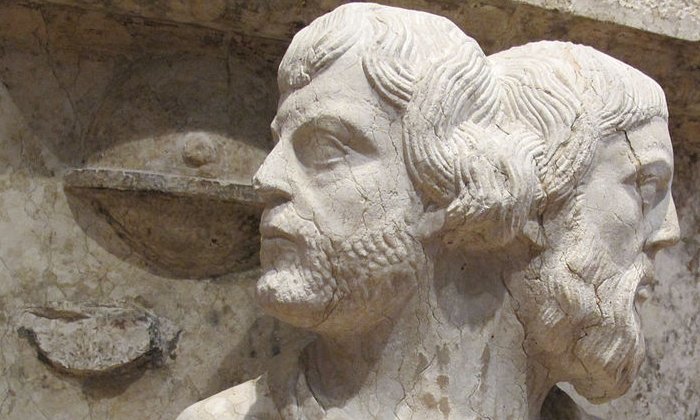 A statue of the Roman god Janus (sense 1) in the collection of the Museum of Ferrara Cathedral in Ferrara, Italy. Janus is traditionally depicted as having two faces, one looking to the past and the other the future. source
A statue of the Roman god Janus (sense 1) in the collection of the Museum of Ferrara Cathedral in Ferrara, Italy. Janus is traditionally depicted as having two faces, one looking to the past and the other the future. source
However, the most important is that the Romans believed he was the god of beginnings and endings. Janus symbolizes the doors and all kinds of openings between realms, states, and conditions.
"We see his name even today in the Western calendar for the year's first month—January. Because everything important has a beginning, Janus was the first god consulted at such events—marriages, births, seasons, days, deaths, and even new buildings and towns.
All religious ceremonies had their beginnings. If a festival of Neptune were held, Janus would be mentioned first so the celebration begins on the right footing. Romans held a fascination for omens. They were forever looking for signs to tell the future. As the present passed through the doorway into the future, Janus was always present demanding consideration from each righteous Roman citizen." 1
In a way, Janus was a prestigious divine figure traditionally consulted in matters related to divinity. It is believed he originates from the two Etruscan deities: Ana (goddess of beginnings) and Aita (god of endings and the underworld).
Janus figures at the Caldragh Graveyard, Northern Irleand. Credit: Kenneth Allen - CC BY-SA 2.0
We find enigmatic, pre-Christian Janus stone figures in a prehistoric place called Caldragh Cemetery on Boa Island. Janus' ancient sculptures are considered one of the most valuable ancient statues and landmarks, with their roots deep in the pre-Christian era.
It's a figure of two beings carved back-to-back and a smaller, less well-preserved one named the "Lusty Man" transported from nearby Lusty Beg island in 1939. The statues have unusually big heads compared to the rest of the body, with large eyes, a mouth, and a narrow nose.
They have crossed arms or legs in front, and between the two heads is an intentionally carved place for holding liquid of some kind or antlers.
The two-faced Janus figure has stood in the Caldragh graveyard on Boa Island, one of several islands in County Fermanagh, since the Celts put it up more than 2,000 years ago. Locals hold the 2ft tall figure, depicting a man on one side and a female on the other, in awe.
Who made these sculptures, and when were the Boa Island figures carved? What did this enigmatic carving mean for its creators? Was he an ancient Pagan fertility symbol, a warrior god, or a representation of the Celts' firm belief in the power of twins?
There have been many different theories regarding his origin and meaning. No one knows if any of them is correct. Perhaps, he represented someone else yet more powerful.
The Boa Island's two stone figures are between 2,000 and 3,000 years old and seem to date from Celtic times. They were part of the people's worship as they were perhaps a representation of their gods, according to John Cunningham, a local historian who dismisses the statues having anything to do with the Roman god Janus, also depicted with two faces.
"The heads are symbolically large because the Celts believed that the head was the seat of the soul and the center of man's life force and power," he said.
Sculptors often depicted him with two faces - one facing forward and the other facing backward. Because a person must enter a new room through a doorway, the Romans also honored Janus as the god of new beginnings.
The first month of the year is named after Janus - "January," a time when people look back to reflect on the year that just passed and forward to the year that begins.
Interestingly, the Roman god Janus had not his counterpart in Greek mythology, but his equivalent in the Etruscan pantheon was a sky god Ani, "god of beginnings, residing in the highest heaven and is sometimes depicted with two faces. It seems worth mentioning that "jauna" is the Etruscan word for "door."
Among the Bamana people of Central Mali, Africa, are Janus-like, two-faced puppets known as Merekum or Merekun. These two faces represent King and Queen and father and mother but also have a classical meaning: the past and the future.
Double herm. Marble, Roman copy after a Greek original. Image credit: Marie-Lan Nguyen - CC BY 3.0
For example, the coins of King Janus of Sicily depicted the figure of the god Janus and on their reverse side was a dove - a symbol of Father Janus as it was of Mother Jane or Mother Juno. And so, the Christian religion still recognizes the dove or pigeon as the symbol of the Holy Ghost.
It is possible that the three-headed Janus - was a triple oak god worshipped in the form of two vertical beams and a cross-bar because the door (with two lintels and side posts) was sacred to Janus, according to Arthur Bernard Cook (1868 – 1952).
Was the three-headed type of this figure the original from which the two-headed and four-headed types were developed?
Statue of Brahma in Bangkok, Thailand. Source
Some very early statues of Janus depict him with four faces, much like Brahma in Hinduism. Brahma's four heads, or the four faces, symbolize the four Vedas or Holy Scriptures of Hinduism. Another legend says that his four faces represent the four main directions of the universe – East, West, North, and South.
Most, however, show Janus with two faces—at times, one face was bearded and one clean-shaven. The sun rises and sets directly over the double-sided figure at the vernal equinox, and Janus has guarded the cemetery at Caldragh for more than 2000 years.
Today, it is really challenging to shed more light on a pre-Christian enigma of the Janus figures.
Written by – A. Sutherland AncientPages.com Staff Writer
Updated on October 6, 2023
Copyright © AncientPages.com All rights reserved. This material may not be published, broadcast, rewritten or redistributed in whole or part without the express written permission of AncientPages.com
Expand for referencesReferences:
- Clayton, M. Roman Mythology: A Captivating Guide to Roman Gods, Goddesses, and Mythological Creatures
More From Ancient Pages
-
 Were Medieval Philosophers Familiar With The Multiverse Theory?
Featured Stories | Oct 4, 2018
Were Medieval Philosophers Familiar With The Multiverse Theory?
Featured Stories | Oct 4, 2018 -
 Why Were Medieval People Easily Offended And Scared Of Rumors?
Ancient History Facts | Oct 14, 2019
Why Were Medieval People Easily Offended And Scared Of Rumors?
Ancient History Facts | Oct 14, 2019 -
 Ancient Maya Reservoirs Contained Toxic Pollution – New Study
Archaeology | Jun 27, 2020
Ancient Maya Reservoirs Contained Toxic Pollution – New Study
Archaeology | Jun 27, 2020 -
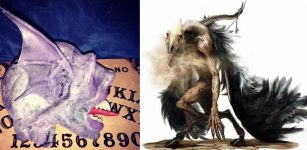 Raven Mocker And Cannibal Body Snatchers In Cherokee Mythology
Featured Stories | Jun 13, 2019
Raven Mocker And Cannibal Body Snatchers In Cherokee Mythology
Featured Stories | Jun 13, 2019 -
 A Baffling 100-Year-Old ‘Alien’ Puzzle – Shocking Cosmic Secrets
Featured Stories | Sep 20, 2018
A Baffling 100-Year-Old ‘Alien’ Puzzle – Shocking Cosmic Secrets
Featured Stories | Sep 20, 2018 -
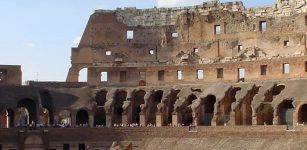 The Truth About Ancient Rome’s Vomitorium
Featured Stories | Jun 18, 2019
The Truth About Ancient Rome’s Vomitorium
Featured Stories | Jun 18, 2019 -
 Exciting Find In The Swiss Alps – First Furrows And Animal Tracks Are Evidence Of Prehistoric Plowing
Archaeology | Apr 3, 2024
Exciting Find In The Swiss Alps – First Furrows And Animal Tracks Are Evidence Of Prehistoric Plowing
Archaeology | Apr 3, 2024 -
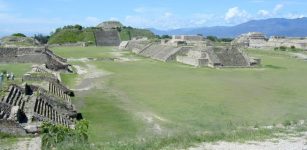 Ancient Mexican City Endured For Centuries Without Extremes In Wealth And Power
Archaeology | Mar 8, 2022
Ancient Mexican City Endured For Centuries Without Extremes In Wealth And Power
Archaeology | Mar 8, 2022 -
 Easter Island Holds Clues To The Disappearance Of People On The ‘Mystery Islands’
Archaeology | May 14, 2021
Easter Island Holds Clues To The Disappearance Of People On The ‘Mystery Islands’
Archaeology | May 14, 2021 -
 Unusual Medieval Picture Stone Found Under House In Klotzow, Germany
Archaeology | Aug 26, 2024
Unusual Medieval Picture Stone Found Under House In Klotzow, Germany
Archaeology | Aug 26, 2024 -
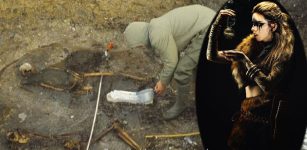 Mysterious Viking Gerdrup Grave – Burial Place Of Sorceress Katla And Her Son Odd Mentioned In The Eyrbyggja Saga?
Featured Stories | Mar 22, 2023
Mysterious Viking Gerdrup Grave – Burial Place Of Sorceress Katla And Her Son Odd Mentioned In The Eyrbyggja Saga?
Featured Stories | Mar 22, 2023 -
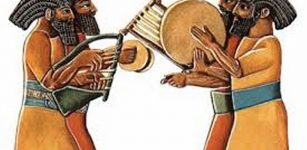 First Record Of Ancient Music Of Babylon
Civilizations | Dec 19, 2014
First Record Of Ancient Music Of Babylon
Civilizations | Dec 19, 2014 -
 Monumental Totem Poles Of Native American People Tell Stories Of Ancestors
Featured Stories | May 22, 2017
Monumental Totem Poles Of Native American People Tell Stories Of Ancestors
Featured Stories | May 22, 2017 -
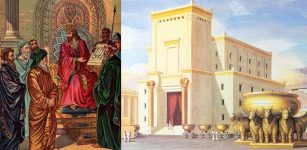 Mystery Of King Solomon’s Temple
Biblical Mysteries | Dec 3, 2018
Mystery Of King Solomon’s Temple
Biblical Mysteries | Dec 3, 2018 -
 Brief History Of Abortion – From Ancient Egyptian Herbs To Fighting Stigma Today
Featured Stories | Oct 3, 2023
Brief History Of Abortion – From Ancient Egyptian Herbs To Fighting Stigma Today
Featured Stories | Oct 3, 2023 -
 The Magnificent Yule Goat In Gävle, Sweden Has Finally Arrived
Christmas Traditions | Dec 2, 2024
The Magnificent Yule Goat In Gävle, Sweden Has Finally Arrived
Christmas Traditions | Dec 2, 2024 -
 Curious Alien-Looking Slit Gongs Figures From Vanuatu Allowed Villagers To Communicate
Ancient Traditions And Customs | Sep 24, 2018
Curious Alien-Looking Slit Gongs Figures From Vanuatu Allowed Villagers To Communicate
Ancient Traditions And Customs | Sep 24, 2018 -
 Secrets Of Mica Chambers Of Teotihuacan
Ancient Technology | Jun 12, 2020
Secrets Of Mica Chambers Of Teotihuacan
Ancient Technology | Jun 12, 2020 -
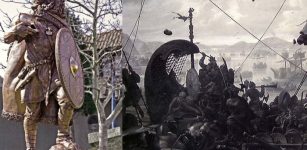 Kylfings – Unknown Warriors Mentioned On Norse Runes – Were They Members Of The Varangian Guard?
Civilizations | Mar 15, 2018
Kylfings – Unknown Warriors Mentioned On Norse Runes – Were They Members Of The Varangian Guard?
Civilizations | Mar 15, 2018 -
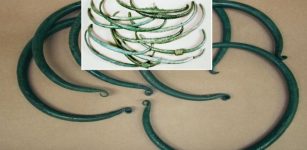 ‘Euros Of Prehistory’ Were Currency Of People From The Early Bronze Age Of Central Europe
Artifacts | Jan 21, 2021
‘Euros Of Prehistory’ Were Currency Of People From The Early Bronze Age Of Central Europe
Artifacts | Jan 21, 2021





